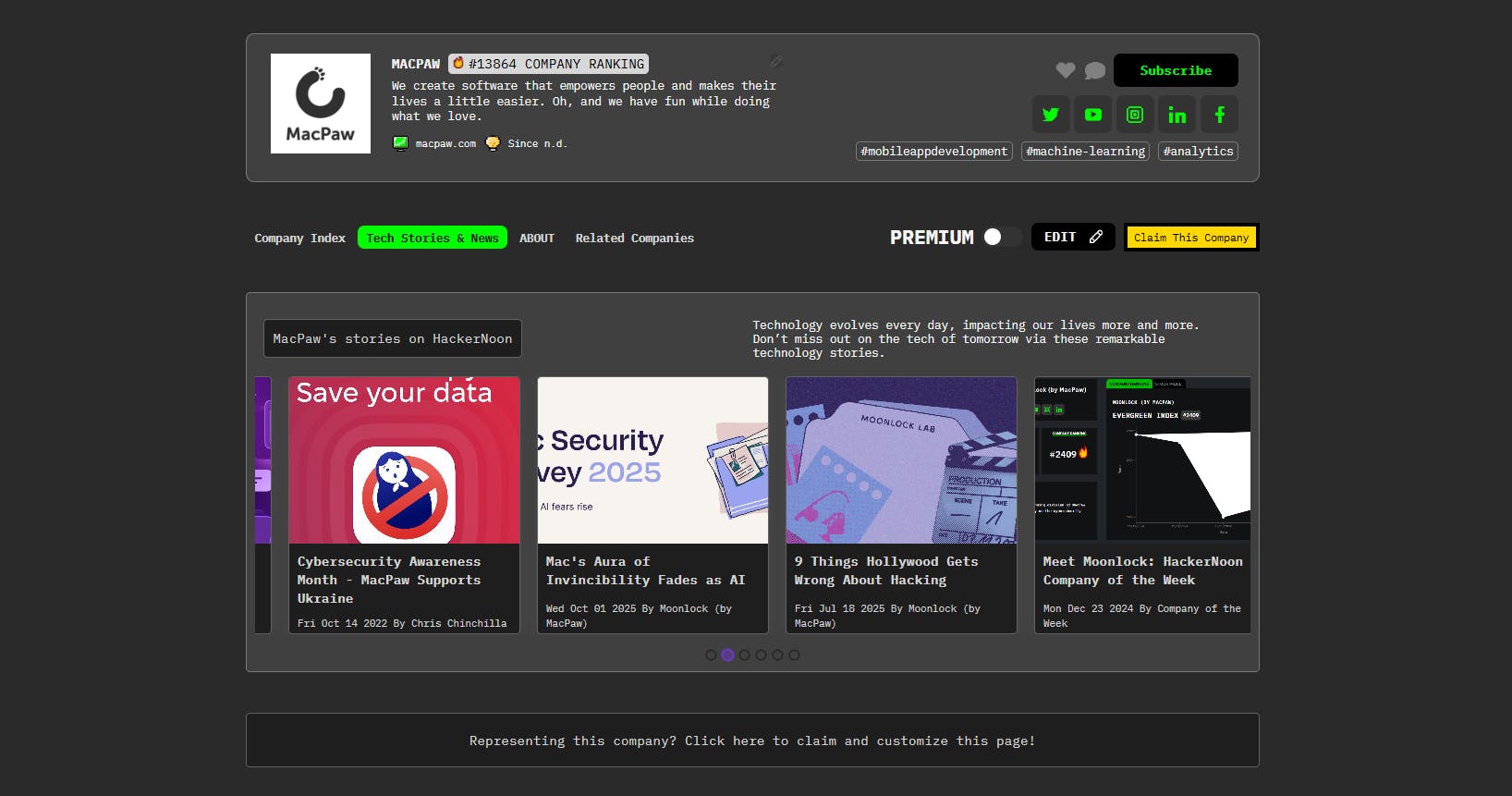Artificial intelligence isn’t theoretical anymore. It’s not something on the horizon or locked in a lab, not a debate for future philosophers. It’s already embedded in workflows, hiding in automation pipelines, quietly slipped beneath the surface of logistics software and scheduling scripts. You’ll find it everywhere if you bother to look. It’s deciding who gets the night shift, which ad shows up on your feed, and whether the system even needs you tomorrow.
People ask whether AI is here to help or to replace. They ask it like it matters.
Truth is, it’s doing both. Has been. Will continue to. The question is wrong because it assumes intent. AI doesn’t intend. It processes. It doesn’t care if your job gets easier or disappears — and companies? They care about margins, not existential dilemmas. So whether it assists or supplants is entirely dependent on which one costs less, breaks less, and complains less. Spoiler: it’s not you.
Of course, the HR departments and press kits say otherwise. They’ll tell you it’s a tool, an enhancer, a collaborator. Maybe next they’ll hand it a birthday cake and call it part of the team. Meanwhile, the assistant’s workload gets sliced. The entry-level role gets absorbed. One day, you notice you’re only needed for the stuff it hasn’t learned yet. Give it time.
This isn’t some singularity. It’s slow erosion. By the time you feel it, half the shoreline’s already gone. And no memo warned you because no one wants to admit the sea’s coming in.
The only real question is how long humans stay in the loop. Not as overseers. Not as partners. Just as obstacles to be routed around — unless we find something it can’t mimic, can’t measure, can’t fake. And even that’s temporary.
Picking a side isn’t going to get you anywhere. AI is already a game-changer and can be a formidable ally or foe in equal measure, depending on who is viewing it and why.
While it opens up new possibilities and improves efficiency, it can just as often turn coders into editors, and writers into proofreaders – while making the same people worry about their job security and the worth of human labor. After all, aren’t these AI-based tools supposed to help humans, much like Clippy would for spell checking back in the day? What is the benefit when it is the inverse as much as a benefit? n n To grasp AI’s role in the workplace of the future, we must examine its current and potential benefits and drawbacks, as well as the ways in which companies can strike a balance between the two to foster growth without sacrificing human workers.
The Prospects for AI as a Friend at Work
Where artificial intelligence earns its keep — at least for now — is in the kind of work people tend not to miss. Repetitive, procedural, largely thankless. Scheduling meetings. Logging data. Answering the same question for the fourth time before lunch. These tasks don’t demand imagination or judgment, only time — and usually more of it than they’re worth. Machines, predictably, don’t mind.
Take the chatbot. It’s not empathetic. It doesn’t think. But it’s good enough to answer the routine inquiries no one wants to deal with anyway. Which means the human support staff can reserve their attention for problems that actually require human traits — nuance, flexibility, discretion. That’s a fair trade.
In finance, it’s the same story. Software handles account balancing and anomaly detection in ways that used to require a small team with overtime pay. Not because it’s smarter — just faster, always on, and indifferent to how dull the task is.
Even in manufacturing, the shift is obvious. AI forecasts maintenance issues, adjusts production timelines, and flags abnormalities without needing a supervisor to check in every hour. The result isn’t a workforce replaced, but one reoriented — less time spent verifying, more time deciding what to do when verification fails.
It’s effectiveness, simply put. Automation takes the weight off the low-tier tasks — the ones least likely to be remembered and most likely to slow things down. In theory, what remains are the parts of work that still ask something of the person doing it: the capacity to judge, to plan, to think in ways a machine, for now, still imitates rather than understands.
Where AI is Moving Towards Substituting
As AI develops beyond its support functions, concerns about replacement become apparent. Some occupations are particularly susceptible because they rely heavily on repeated tasks. There has already been a movement toward AI systems performing most of the work formerly done by humans in data entry clerk, basic transcriptionist, and certain call center positions.At a certain point, the line between “helping” and “doing it instead” blurs. AI doesn’t just make things easier — it starts making things unnecessary. The more repetitive the task, the faster it gets eaten. Data entry’s already halfway gone. So are most transcription roles. Call center jobs — especially the ones where every response is scripted anyway — are being gutted not because the AI is brilliant, but because it’s good enough and never asks for a bathroom break.
Logistics used to be a dispatcher, a whiteboard, and a guy with a radio. Now it’s algorithms routing trucks based on traffic data and predictive modeling. Cashiers? Slowly being erased by touchscreens and cameras that watch you like you’re already stealing. And if you thought the white-collar world was safe, go talk to a legal assistant. That job’s being redefined from “read and highlight contracts” to “watch the AI do it and double-check.” Same task, different title — and half the staff.
It’s rarely an overnight thing. Jobs don’t vanish — they erode. AI doesn’t announce it’s taking over; it just shifts the weight. What used to take three people now takes one person supervising three models. Technically, the job still exists. Just not for you.
Explaining Why a Full Replacement Is Very Rare
The headlines like clean stories: robots replacing humans. But real life isn’t clean. Jobs are messy, tangled piles of tasks, not single, replaceable actions. Sure, some of them can be automated. But others — the ones involving instinct, warmth, improvisation — don’t get replaced so easily.
A machine can grade a test. It can’t look a failing student in the eye and figure out why they gave up halfway through. It can process a medical scan down to the pixel. But it doesn’t know how to hold someone’s hand when the results aren’t good. That gap — between data and meaning — is still where people matter.
Even in places where AI should be flawless, it slips. Automated trading systems beat humans in speed but make catastrophic decisions when the context changes and nobody’s watching. Efficiency without oversight just collapses faster.
So most roles don’t vanish completely. They shift. Some hollow out. Others turn into something harder to define. The job’s still there — but it looks different, pays less, or quietly becomes three jobs rolled into one. It’s not a clean kill. It’s a transformation. And depending on where you stand, that’s either a euphemism… or a warning.
What People Have That AI Doesn’t: The Human Advantage
The shortcomings of artificial intelligence define, more clearly than any list of accomplishments, the areas where humans retain purpose. AI, in its current and foreseeable forms, fails at understanding context. It can identify patterns and project trends, but it cannot truly comprehend meaning. Culture, tone, implication, subtext — these remain outside its grasp. What it can process, it cannot interpret. What it can flag, it cannot explain.
The matter of originality is likewise unresolved. AI does not invent. It recycles. It collates precedent, but it does not experience vision, nor the creative impulse. Its outputs are derivatives — sometimes convincing, often useful, never born from lived insight or unprompted imagination.
Empathy is another frontier that it does not cross. There is no understanding in it, no shared experience, no capacity for genuine concern. The simulation of kindness is not the presence of it. And in leadership, negotiation, or care, this absence is not a detail. It is the failure point.
On moral grounds, too, the machine is inert. It does not believe. It does not weigh cost against principle. It applies logic trees, and when confronted with a contradiction, it defaults. There is no conscience. In fields such as medicine, law, or governance, this absence has consequences. It cannot be ignored.
These gaps — in context, creativity, empathy, and judgment — are not simply advantages. They are the remaining foundation of human relevance in a shifting labor landscape. And it is within these domains, precisely because they resist replication, that the most meaningful future roles will be found.
Harmony in the Workplace: Humans and AI Working Together
Neither total replacement nor outright rejection of AI constitutes a viable future for the modern workplace. Both are extremes, and both fail under scrutiny. What emerges instead is a form of managed coexistence — not out of preference, but necessity.
In practical terms, this means delegation. The machine is permitted to operate at scale, to manage bulk tasks, to accelerate throughput. The human remains responsible for interpretation, for exception handling, and for meaning. Where the system identifies irregularity, the person discerns its cause. Where the model projects risk, the person weighs the outcome. This pattern, repeated across sectors, defines the structure of contemporary hybrid operations.
Consider logistics: an AI system may optimize routes and timetables, but it will not know which side streets collapse in heavy rain. In hospitals, image recognition can detect anomalies in scans, but it cannot determine how to explain the results to someone facing their own mortality. Scale and speed are not substitutes for trust or clarity.
The strength of such arrangements lies in their asymmetry. AI offers breadth, humans offer depth. When aligned, this balance produces a measurable increase in output and accuracy. But it is not a partnership. It is not in equilibrium. It is an architecture. And like all systems of architecture, it only functions when each part understands its limits.
The Financial Justification of Harmony
The decision to integrate AI is not solely technical. It is, in part, moral — and more precisely, operationally moral. Employees are not interchangeable with systems, not merely because of skill variance, but because their presence within an organization carries meaning: loyalty, adaptation, culture, and trust. The framing of AI as a replacement — even when quietly applied — risks destabilizing this foundation. When workers perceive a threat, they resist. And resistance, even when passive, slows every intended advance.
Conversely, when AI is introduced as a means of preserving human effort — as an extension of purpose rather than a prelude to erasure — its acceptance increases. A warehouse worker does not object to a machine lifting what otherwise might injure them. An office worker does not mourn the automation of reports if what replaces it is time, and with it, strategic relevance.
This is not optimism. It is operational pragmatism. If the system is cooperative — if the machine supports rather than consumes — the organization gains capacity without shedding its identity.
Examples of Real-World Balance
There are precedents for balance. In certain sectors, AI has already been implemented without displacing the workforce at scale.
In retail, AI manages inventory and demand curves, but customer service remains human. Visual presentation, in-store adjustments, and consumer engagement are still performed by staff. Optimization occurs without dissolving the front line.
In medicine, AI assists in diagnosis. It reads scans, flags anomalies, and suggests probabilities. But doctors and nurses remain the primary agents of care. Their time is reallocated toward interaction, not removed from the equation. Human presence remains central to treatment.
In agriculture, drones assess soil and crop conditions, but it is the farmer who interprets the data and makes the final decision. The field does not harvest itself. These examples clarify a basic point: AI, when introduced as a system of augmentation rather than replacement, improves outcomes without erasing the worker.
What Will Skills Look Like in the Age of AI?
As artificial intelligence becomes embedded in more industries, the demand for adaptable workers increases alongside it. The objective is not to outperform the machine, but to specialize in what remains outside its reach. Human capability must evolve in parallel — not to compete, but to retain relevance.
Skills such as communication, critical thinking, leadership, and complex problem-solving gain importance. These are not merely soft skills. They are the foundation of human-specific labor in a system increasingly optimized for automation. Technical proficiency, while not universally required, becomes advantageous — particularly in understanding how to operate alongside AI, not against it.
The future worker will not be defined by a fixed role, but by a capacity for retraining. Those who maintain relevance will be those who can adapt repeatedly. Organizations that recognize this and invest in upskilling will benefit most. AI does not eliminate labor; it redefines it. The role remains, but the shape of it changes.
Striking the Perfect Balance: Insights for Leaders
The problem for leadership is not simply when to deploy artificial intelligence, but how. The question is no longer whether machines are capable. The concern is whether their implementation will displace expertise, and with it, stability.
Companies such as Predictive Equations, for instance, have adopted a different approach. Rather than replace, they extend. Their models extract clarity from degraded or low-quality visual data, recovering what would otherwise be lost. These systems are not intended to operate independently of human input, but to enhance it — to make visible what the eye cannot restore unaided.
In every case of deployment, several questions must be addressed. Who will teach the staff how to use it? Which tasks should remain strictly human — by necessity, by ethics, or by risk? How will the transition be communicated to avoid fear and preserve trust?
The answers to these questions determine the outcome more than the technology itself. Without transparency, resistance grows. Without structure, implementation collapses under its own promise.
Assistance and replacement are not separate trajectories. They exist on the same line. Stability, if it is to exist, requires restraint.
Machines will continue to automate repetition. They will handle volume, consistency, and precision. But they will not — not fully — replace empathy, moral reasoning, or creative origin. These remain human. They are not inefficiencies. They are boundaries.
The future of labor will not be defined by direct opposition between human and machine. It will be shaped by proximity — and by what the human still retains.
Where AI is used to extend capacity, organizations will grow. Where it is used to subtract human presence, they may become faster — but not necessarily better. The distinction between assistance and replacement will decide the structure of work, and whether or not there is still a place within it for us.
Who will teach the staff how to use it?
The question of who will teach the staff how to use artificial intelligence cannot remain unanswered. Deployment without instruction ensures failure. A system unfamiliar to its operators is, by definition, unusable. Training is not optional. It is a condition of implementation.
Some tasks, regardless of technical feasibility, should remain under human control. This is not a question of efficiency, but of ethics and safety. Where judgment, liability, or irreversible consequences are involved, delegation to a machine is not acceptable. In these cases, the presence of a human is not supplementary. It is essential.
If AI adoption is to proceed without collapse, the way it is communicated must be deliberate. Uncertainty invites fear. Assumptions create resistance. Companies must be clear not only in function, but in intent. A workforce cannot be expected to accept what it has not been allowed to understand.
By answering these questions directly and without delay, companies can avoid the structural consequences of over-automation. The danger is not in the tool. It is in failing to define the terms under which the tool is used. If addressed properly, AI can contribute to institutional growth without removing the people required to sustain it.
In sum, assisting and replacing are two sides of the same coin.
AI goes beyond simple assistance or replacement in the workplace. Stability is key. Automating repetitive chores is one way machines make labor easier and faster. Even jobs requiring extreme swiftness and accuracy are beyond their capabilities. However, they aren’t a suitable substitute for human judgment, empathy, creativity, and depth.
Humans and computers will not be at odds in the workplace of the future. A partnership it is not. With AI used as a supplement, not a substitute, companies can reap the benefits of both human creativity and machine intelligence.
Companies that view AI as a tool to enhance human potential, rather than a replacement for human labor, will be the ones who succeed in the years to come. There is a difference between helping and replacing, and the decision between the two will determine the nature of work in the future. n










